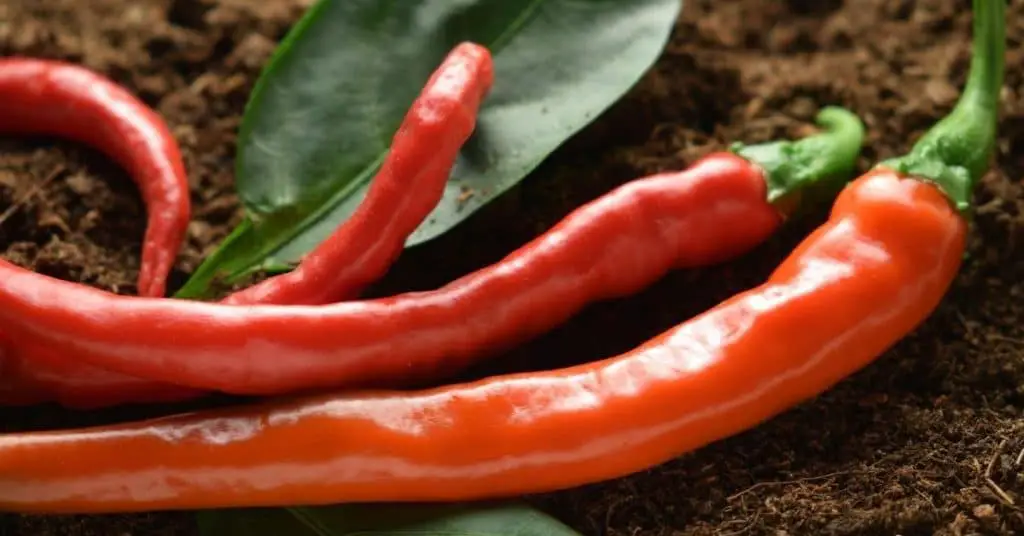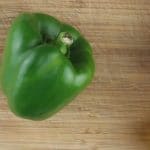Shortly, yes, you can freeze chili peppers to extend their shelf life. While the texture may become softer after thawing, the flavor remains unchanged and they are perfect for use in cooked dishes, sauces, or dressings.
Don’t be fooled by their size. Even the smallest chili pepper can spice up an entire dish. This is great as it means you don’t need a lot to flavor your cooking, but it also means that you may have a whole lot leftover which you cannot use up before they start going bad.
Hot peppers are great stored in the freezer allowing you to avoid waste and conveniently add a bit of spice to your desired meal at any time. Here is everything you need to know about freezing chili peppers.
Can Chili Peppers Be Frozen?
Since fresh peppers can be very spicy, you generally only need one or two when cooking. If you are harvesting your own or have bought a bag of chilies from the store, this may leave you with quite a bit of leftover stock. Luckily, these peppers can be frozen to prolong their shelf life.
The flavor will not change but the texture will be softer than when they are fresh. This, however, is not a problem when using them cooked or in a sauce or dressing.
Once thawed, the skin of the chili pepper usually comes off very easily which is convenient especially since removing this rubbery layer of skin enhances the flavor and digestibility of the peppers.
How To Freeze Chillies
When you prepare chillies, it is recommended to wear gloves as the oil in the peppers will get onto your hands and skin causing a burning sensation. Often, even after washing your hands, the sensation still lasts, and touching your face, eyes, or mouth will have a stinging effect.
Wearing gloves while working with fresh chillies is the best option. Avoid touching other items and either discard the gloves or wash them well with soap once you are done.
Step 1: Sort
Sort through the chilies, choosing only the healthy ones to freeze. Discolored or diseased chilies will not last well in the freezer.
Step 2: Clean
Wash the hot peppers well and cut the stalks. Slice the peppers lengthwise and remove all the seeds and membrane by scraping it out with a spoon. If you like your food really spicy, you may prefer to leave the white seed membrane intact.
Step 3: Chop (optional)
Either leave the peppers in half or chop them into smaller pieces as preferred.
Step 4: Flash Freeze
Line a baking tray with parchment paper or wax paper and spread the chili halves or pieces on the baking sheet. Place it in the freezer for 20 to 30 minutes or until just frozen. This prevents the pieces from sticking together and freezing in one large clump. They also freeze quickly this way which is better for preservation.
Alternatively, if you have finely chopped the hot peppers, you can freeze them in a small ice cube tray (add a little water if you need to). Pop it into the freezer for a few hours just until frozen to form chili blocks for adding to stews, soups, and hot sauces.
Step 5: Pack
Remove the sliced peppers (or cubes) from the freezer and pack them immediately into resealable freezer bags ensuring they do not have time to thaw or stick together. Remove as much air as possible by lightly pressing the freezer bag and then seal tightly.
Step 6: Label and Freeze
Label the freezer bag with the date and place it in the freezer.
How To Thaw Frozen Chili Peppers
Remove the frozen peppers you require from the freezer and place them in the fridge to thaw. If you are cooking with the chili cubes or pieces, you can also just add them straight to the dish whilst cooking.
Types of Chili Peppers
The chili pepper is a fruit from the nightshade family and is used worldwide to add heat and spice to dishes. They vary in size and color, and even if small (like jalapeno peppers), they pack a huge punch.
Fresh pods are either thin and long (for example, hatch green chilies) or come in a bell-type shape in red, yellow, orange, green, or dark purple.
There is a large variety of peppers available worldwide, which are commonly classified in three groupings namely: bell peppers, sweet peppers, and hot peppers. The leaves of chili pepper can also be eaten and are typically cooked in soups and stews in the Far East.
As you can gather from their common classifications, peppers vary in heat. Some have a slightly sweet flavor, others are mild and peppery with a herbaceous flavor, while hot peppers provide a big kick of heat and spice.
Fresh peppers can be prepared as a vegetable, roasted, charred, or sliced and added as a hot spice or mild flavor addition. Pods can be dried, ground into flakes or chili powder, and added as a seasoning. They are also popularly preserved by brining, pickling, or immersing in oil.
Although hot peppers are mostly used in savory applications, they have sneaked their way into the sweets’ arena, especially popular combined with chocolate.
Most commonly, however, peppers are used in sauces, curries, stir-frys, pastes, sambals, salads, marinades, soups, stews, and dressings.
FAQs
Conclusion
Chopped, blended, dried, ground or whole, peppers can be used in so many different ways. From Italian pasta sauces to Mexican Chili and Indian curry, chili is a worldwide favorite.
Growing your own chilies can leave you with a bag full when all you really need is one pod at a time. Freezing is a fantastic way to preserve these spicy fruits, and to have them ready prepped for a convenient addition to any meal.
Up Next: How to Freeze Chili Con Carne
Photo by depositphotos.com/Euripides









